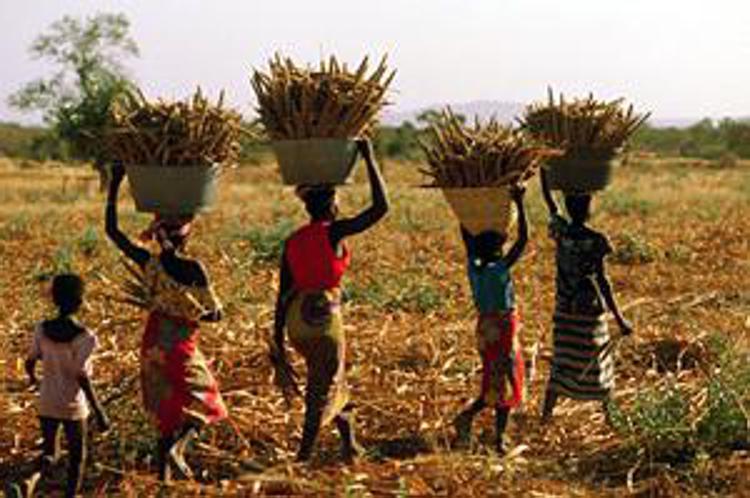

There are fears agricultural output in the Horn Africa, war-torn Yemen and in Sudan will be harmed by a Desert Locust outbreak in the coming months triggered by heavy rainfall, the United Nations Food and Agriculture Organisation said on Thursday.
Parts of Yemen, Sudan, Eritrea, Ethiopia and northern Somalia are especially at risk of such outbreak and resulting damage to agricultural yields and local economies during the Desert Locust summer breeding season, the FAO statement said.
The feared Desert Locust outbreak could prevent local populations getting enought to eat and damage their livelihoods, especially those of farmers, livestock breeders and nomads, the statement warned.
Intensive ground and aerial control operations were mounted in Iran Saudi Arabia and Sudan this year which cut locust populations but could not entirely stop swarms from forming and moving to the traditional Desert Locust summer breeding areas in Yemen, Sudan, the Horn of Africa and along the Indo-Pakistan border, said the statement.
Coastal areas of Yemen and in the interior of Sudan face a moderate to high risk of the Desert Locust pest escalating further in the interior and causing swarms to form that would threaten agricultural production by the end of the summer, the statement added.
Further increases of Desert Locust are expected along both sides of the Red Sea during the upcoming winter from November onwards, according to the statement.
Yemen - where the world's current worst humanitarian crisis is playing out - poses the greatest cause for concern and is at highest and most immediate risk from a Desert Locust outbreak due to widespread hopper band infestations and heavy rainfall that will cause swarms to form from this week onwards, the statement underlined.
Such an outbreak could give rise to another generation of the pest by the end of August if weather conditions remain favourable to locust breeding, according to the statement.
In the worst-case scenario, swarms could migrate from Yemen in the autumn to the Horn of Africa and reach Kenya by the end of the year, "unless urgent preventive and control measures" are put in place in the region, the statement warned.
In northeast Somalia, mature Desert Locust swarms were seen at several locations during the past weeks, causing "substantial" crop damage, the statement added.
Hopper bands are now forming along Somalia's northwest coast and probably in the northeast from eggs laid by the swarms. This could give rise to new swarms by about late August, the statement went on.
Similar breeding is expected to occur in eastern Ethiopia while groups of adult locusts may move from the northern region of Amhara to the summer breeding areas in western Eritrea and in Sudan's interior.
In Sudan, high numbers of adult populations are present in the Nile Valley while scattered adults appeared recently on the Red Sea coast and in North Kordofan where summer breeding will occur.
After they become airborne, swarms of tens of millions of locusts can fly up to 150 km a day with the wind. An adult Desert Locust can consume roughly its own weight in fresh food per day- about two grams - and a very small swarm eats the same amount of food in one day as about 35,000 people, the statement pointed out.
"Urgent Desert Locust control operations are required to safeguard crops and mitigate the risk of infestation in Yemen, as well as to prevent locust swarms from invading the neighbouring countries," the statement said.
In Yemen, survey and control operations are hindered by a lack of security in locust breeding areas and insufficient capacities such as equipment and operating funds. FAO has launched a general appeal to the international community and has "rapidly mobilized" $100,000, thanks to a contribution from Belgium and $200 000 from its own resources to mount a much-needed anti-locust campaign, the statement underlined.
The FAO campaign will help around 100, 000 people in Yemen's Lahij, Shabwah, Hadramout, Abyan, Sanaa and Al-Hodeidah provinces in saving their crops and averting increased hunger and poverty in rural areas that are already impacted by ongoing conflict, the statement .
While Sudan is much better equipped and prepared for a Desert Locust outbreak than some other countries in the region, the current political unrest in the country may reduce the effectiveness of operations this summer, it said.
Capacity in Eritrea, Ethiopia and northern Somalia also remains relatively limited, the statement said.
Affected countries must remain vigilant and should monitor conditions on the ground via regular surveys and take the necessary control measures whenever they detect major locust infestations, the statement concluded.